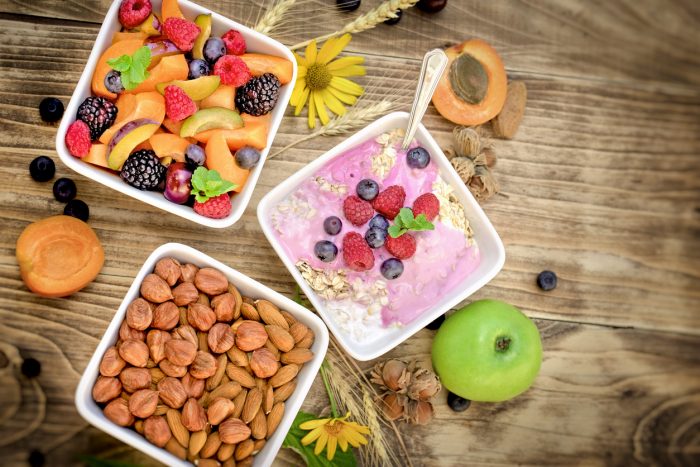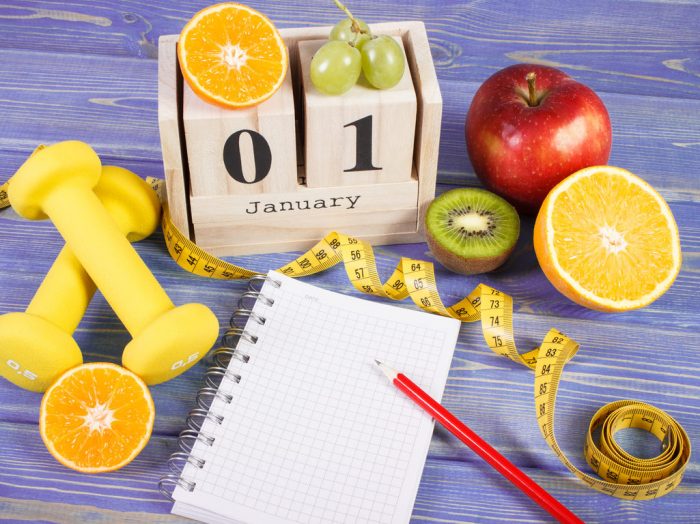Food resolutions are probably on your mind these days, a time for new beginnings. That’s a positive thing: focus on them, and not a hard-and-fast diet. Eating healthy should be a lifestyle, only that way you’ll be able to look and feel good!
I start every new year wishing I could lose some weight. Every. Single. Year. I choose a severe diet, I lose some pounds, then I start to eat fatty and sugary foods, and I go back to where I started. Same story every year. But not this time. This time, I choose a different path by setting some food resolutions for 2018. If you also want to improve your eating habits throughout the new year, let’s take up this challenge together and, at the end of the year, let’s see what we’ve managed to change in our lives.
10 food resolutions for 2019
1. Cook at home
If the main purpose of setting some food resolutions for this year is to eat healthier, then you should totally try cooking at home as much as you can! Cutting out processed and microwaved meals would be one of your best choices this year! Also, cooking can be therapeutic.

2. Stay hydrated no matter the season
During the summer it’s quite easy to drink about 2 quarts (2 liters) of water a day because it’s hot and you sweat a lot. But drinking water only in the summer isn’t enough. You should do this during colder times, too. Choose hydrating fruit and vegetables, like cucumber, radishes, tomatoes, watermelon, strawberries, grapefruit, and other high-water-content foods.
3. Forget about sugar-sweetened beverages
Don’t drink your calories! Sugary drinks are not good at all! The calories provided by sugar-sweetened beverages have little nutritional value and may not provide the same feeling of fullness you get from solid food. This can lead to unhealthy weight gain. Also, if you have children, don’t give them sugary drinks! Make natural fruit juice instead!
4. Stop snacking at work
According to a new survey carried out by Dutch food brand Kallø, the average woman consumes 100,000 extra calories per year eating snacks at work. The Daily Mirror reports that according to the survey the average woman will eat 135 biscuits, 90 slices of cake, 90 packets of sweets, and 45 doughnuts a year at her desk. Instead of crunching some unhealthy foods, pack your own healthy food, like raw almonds, walnuts, veggie sticks, or fruit.

5. Get inspired by people who eat healthily
Instagrammers are real influencers, so follow people preoccupied with eating healthy. If you’ll see pictures with light salads, healthy breakfasts, less-sugar desserts, you’ll become aware of what you eat, and you’ll start to change your lifestyle in a healthy way. You can also use an app with healthy recipes, like AllDelicious!
6. Cut down on the sugar
Added sugar can have harmful effects on metabolism and contribute to all sorts of diseases. It contains no essential nutrients and is heavy in calories that can lead to extra pounds or even obesity.
Homemade desserts are a good idea if you make them using natural sweeteners like agave syrup or fructose from real fruit. Also, the lactose found in milk makes your coffee sweeter, so you may not even need extra sugar!
7. Try a no-meat day once a week
Try to give your body a break from tough-to-digest meats at least once or twice a week! You don’t need that much animal protein! Consider a weekly detox from meat and try as many vegetarian recipes as you can. After you’ve tried enough, make a list of the ones you liked the most, and keep cooking them during your meatless day.

8. Eat as much as you need! Not more!
We usually eat more than our body needs. But that’s a huge mistake, so one of your food resolutions for this year should be to eat less! What does less mean? You can check the suggested servings from the American Heart Association, or you just can finish your meal before you feel satisfied. Another trick for eating less is to use smaller plates.
9. Get creative with desserts
There are plenty low-sugar dessert recipes out there. Let go of puff pastry and batter! Cut down on butter and eggs, and cook delicious desserts using fruits!
10. Less bread
You don’t have to completely cut out the bread from your meals! Who doesn’t like some bread and a spread from time to time? You just need to eat it less often and choose quality bread. Choosing the best bread can be confusing. The bread labeled as ‘whole-wheat’ isn’t always the best option. Just because the name on the package sounds super-healthy, it doesn’t mean the bread really is healthy. You should read the labels carefully: the first ingredient listed on the label tells you what you’ll be eating.






